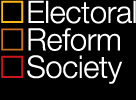Electoral Reform Society
|
|
Digital imprints: what are they and why are they useful?
This general election will be the biggest we’ve seen yet for online campaigning. It’s an area where the ERS, along with many others, have long called for updates in electoral law. While there is still a long way to go, one positive step towards this end was introduced in the Elections Act of 2022 which set out new transparency requirements for UK campaigners.
‘Digital imprints’ are designed to make it clear to the public which person or organisation is responsible for promoting an advert. The legislation came fully into force in the November of 2023.
You might recognise ‘imprints’ from print material or digital ads if you live in Scotland, but the new law expands the reach of the requirements both geographically to the whole of the UK as well as to a larger number of campaigners. Irrespective of if an ad is paid for, campaigners registered with the Electoral Commission must now include an imprint with their online posts if they clearly aim to generate support for or against a specific candidate or party; and they are shared in the buildup to an election, referendum or recall petition. These criteria also apply to any unregistered campaigners who pay to publicly post political content online.
What impact do imprints have?
When it comes to anticipating their impact, it’s useful to pinpoint which threats digital imprints address. Imprints do not, for example, illuminate much about the accuracy of a claim. This makes them unlikely to be effective in helping voters identify political disinformation. For the same reason, a digital imprint does not guarantee that a campaigner is trustworthy, beyond that they are at least compliant with electoral law.
So long as the public are aware of requirements, the absence of an imprint could provide a means of spotting potentially suspicious campaigners. Yet, in every case, further fact checking would be needed to determine this with any certainty. If a campaigner is unregistered and not paying to post, or if their post is purely about a policy issue and does not directly favour any one candidate or party, an imprint would not be necessary.
Where digital imprints do become more useful is in helping voters identify if what they are seeing is, in fact, an ad. ‘Native advertising’, a phenomenon where content is designed to blend in with its surroundings to appear less ad-like, is often used to increase the persuasive power of a message1. In consumer advertising, making influencers disclose sponsorship can help potential buyers identify when an influencer is expressing spontaneous enthusiasm for a product or has been paid to promote it. Knowing the difference matters, because chances are this will change how we evaluate the message. Research supports2 that messages promoted by a seemingly unbiased source of information tend to be more persuasive than sources who clearly have a vested interest.
Like brands promoting a product, native political advertising may take the form of a social media post that appears as spontaneous approval for a candidate, or a piece of journalism appearing in a news outlet, while leaving underlying political associations either unclear or completely undisclosed. These methods aren’t limited to online spaces. For example, fact checking organisation Full Fact have recently called for political parties to stop circulating ads that appear as local print newspapers. Through doing so, they can piggyback off the credibility people associate with independent news sources.
Native advertising techniques aren’t necessarily a bad thing for politics. It could, for example, be a useful means of informing the public in new and engaging ways. However, voters deserve the full picture to properly assess the information they see. So far, research supports that political ad disclosures can effectively boost understanding that what is being viewed is an ad3. Digital imprint requirements are therefore likely to makes it harder for campaigners to disguise their motives.
Digital imprints will not tackle all the threats faced by voters in online spaces and represent just one piece of the puzzle in a much needed broader course of action. Although less effective in revealing what could be political disinformation, imprints do provide an easily accessible means to spot content that has been designed with the intention of influencing public opinion. While the extension of transparency requirements is a welcome addition to political campaigning, there is plenty more for the next government to look at.
The rules on campaigning need to catch up with the digital age
Original article link: https://www.electoral-reform.org.uk/digital-imprints-what-are-they-and-why-are-they-useful/
|
Building a Better Democracy |
Tweets by electoralreform | ||||||
|
|||||||



